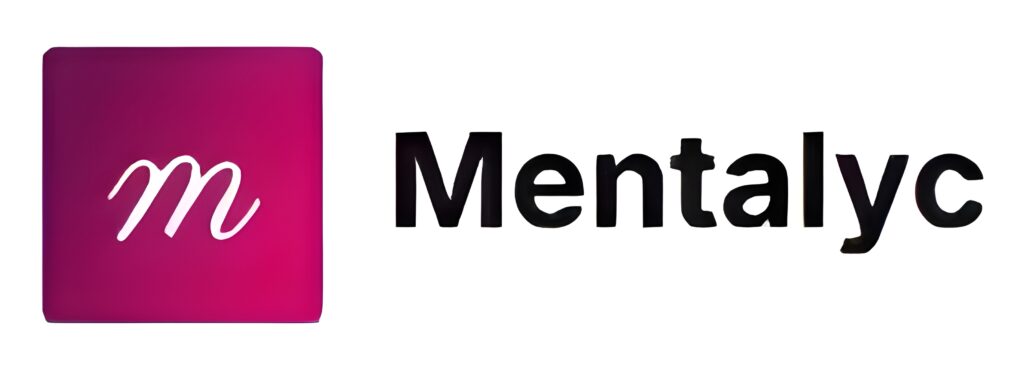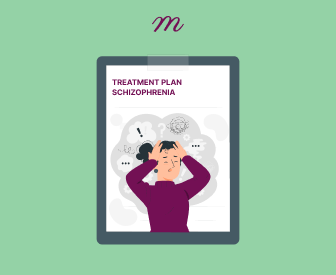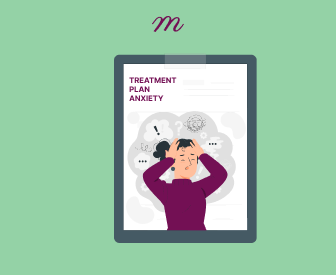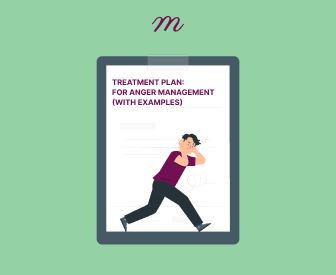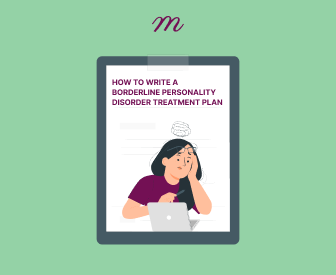Have your progress notes written for you automatically
Schizophrenia is a complex and challenging mental health condition that affects millions of people worldwide. With symptoms like hallucinations, delusions, and emotional withdrawal, it can disrupt lives and relationships if left unmanaged. A comprehensive treatment plan is more than just a tool—it’s a lifeline, offering structure and support to help individuals manage symptoms, regain stability, and reduce the risk of relapse.
For therapists, designing a schizophrenia treatment plan isn’t a one-size-fits-all task. It’s a blend of science, creativity, and empathy, requiring tailored strategies that address each patient’s unique needs. Whether you’re an experienced clinician or new to treating schizophrenia, this guide will walk you through proven techniques and actionable examples to create plans that empower patients on their path to recovery.
Core Components of a Schizophrenia Treatment Plan
These components provide the foundation for managing symptoms and supporting recovery. A plan focuses on addressing the unique needs of each individual through a combination of evidence-based interventions and collaborative strategies. This section breaks down the key elements that make a treatment plan both practical and impactful, ensuring therapists have a clear framework to guide their patients toward stability and improved quality of life.
Step 1: Comprehensive Assessment, Diagnosis, and Recommendation
A well-structured treatment plan for schizophrenia begins with a comprehensive assessment, accurate diagnosis, and tailored recommendations. These steps lay the foundation for effective, individualized care that addresses the unique needs of each client.
Comprehensive Assessment
The assessment phase involves gathering detailed information about the client’s mental, physical, and social health. This includes:
- Clinical interviews to evaluate symptoms such as hallucinations, delusions, and disorganized thinking, as well as the history of the problem.
- Standardized tools like the Positive and Negative Symptoms Scale (PANSS) or Brief Assessment of Cognition in Schizophrenia (BACS), which offer measurable insights into symptom severity, cognitive function, and overall psychosocial performance [1, 2].
- It’s also necessary to evaluate the client’s environment, family dynamics, and stressors, as these play a critical role in disease management and recovery [3].
Diagnosis
Accurate diagnosis is critical for distinguishing schizophrenia from other psychiatric or neurological disorders. Symptom-based diagnostic frameworks, such as those outlined by the American Psychiatric Association [4], guide clinicians in identifying key symptoms like persistent delusions, hallucinations, and cognitive impairments.
Tailored Recommendations
Following the assessment and diagnosis, clinicians develop recommendations that balance pharmacological and psychosocial interventions to address treatment objectives. A robust treatment plan might include:
- Medication management, ensuring adherence, and monitoring side effects.
- Cognitive-behavioral therapy (CBT) for managing residual symptoms.
- Social skills training and psychoeducation to empower clients and families [5].
Step 2: Goal Setting and Prioritization
After conducting a thorough assessment and diagnosis, the next step in creating a treatment plan for schizophrenia is goal setting and prioritization. This process ensures that treatment is focused, actionable, and aligned with the client’s individual needs and values. Research shows that setting clear and prioritized goals not only improves treatment adherence but also fosters greater engagement from clients [6].
Key Elements of Goal Setting
- Collaborative Approach
Goals should be set collaboratively with the client and, where appropriate, their family or support network.
- Focus on Meaningful Engagement
Patients often prioritize goals that extend beyond symptom control, emphasizing quality of life, social functioning, and overall life engagement.
- SMART Goals
Using Specific, Measurable, Achievable, Relevant, and Time-bound (SMART) goals provides a clear framework for tracking progress. For example:
- Short-term goal: Improve adherence to medication within one month by establishing a daily routine with reminders.
- Long-term goal: Increase social interaction by attending biweekly community support meetings within six months.
Prioritizing Interventions
When clients face multiple challenges, prioritizing interventions is critical. Research highlights the importance of addressing both immediate needs, like acute symptoms, and longer-term goals [7], such as reintegration into work or social activities. Therapists can guide clients by focusing on:
- Immediate actions: Stabilizing severe symptoms or addressing safety concerns.
- Building momentum: Starting with achievable goals to foster confidence and motivation.
- Personalized priorities: Tailoring the plan to the client’s values and readiness for change.
By combining clinical expertise with patient input, therapists can develop treatment plans that are both effective and empowering. This patient-centered approach not only ensures the client is an active participant in their recovery but also enhances treatment outcomes by focusing on what truly matters to them.
Step 3: Implementing Psychosocial and Pharmacological Interventions
Once goals are established, the next critical step in a treatment plan for schizophrenia is implementing evidence-based psychosocial and pharmacological interventions. Research demonstrates that a combination of these approaches is the most effective way to manage symptoms, enhance functioning, and improve quality of life.
Pharmacological Interventions [8]
Antipsychotic medications are the cornerstone of schizophrenia treatment, especially during active phases, targeting positive symptoms like hallucinations and delusions. Second-generation antipsychotics are often preferred for their improved tolerability, though they come with risks such as metabolic side effects. However, pharmacological strategies should be individualized based on symptom severity, side effect profiles, and patient preferences.
Maintenance therapy ensures long-term stability, reducing relapse risks. For patients with adherence challenges, long-acting injectables offer a practical alternative.
Adjunctive medications may be cautiously used for persistent negative symptoms or co-occurring disorders, but evidence for their effectiveness is limited. Clinicians should weigh benefits carefully, particularly when prescribing SSRIs or SNRIs.
Psychosocial Interventions [9,10]
Psychosocial interventions complement pharmacological treatment by addressing behavioral, cognitive, and social challenges. These interventions include:
- Cognitive-Behavioral Therapy (CBT):
CBT helps patients develop coping strategies for residual symptoms, such as hallucinations and delusions. It focuses on restructuring negative thought patterns and reducing distress related to psychotic symptoms.
- Family Psychoeducation:
Involving family members in treatment through structured psychoeducation programs reduces stress, enhances communication, and improves outcomes for both patients and their families.
- Social Skills Training (SST):
SST focuses on teaching interpersonal and communication skills to improve social interactions and reintegrate patients into their communities. Studies show that SST enhances social functioning and reduces isolation.
- Supported Employment:
Employment programs help individuals with schizophrenia achieve vocational goals, fostering independence and improving self-esteem.
Combining Interventions for Maximum Impact
Integrating psychosocial and pharmacological interventions leads to better outcomes than either approach alone [8].
Example of Integration in Practice
- First 3 Months: Stabilize symptoms using antipsychotics while initiating CBT to address delusional thinking.
- Months 3–6: Introduce family psychoeducation and SST to strengthen social support and community reintegration.
- Ongoing: Monitor medication adherence and evaluate the need for supported employment programs to enhance independence.
With this combination, therapists can create a comprehensive treatment plan that addresses both the clinical and functional needs of individuals with schizophrenia. This approach fosters recovery, reduces relapse rates, and improves quality of life for patients and their families.
Step 4: Monitoring Progress and Adjusting the Plan
After implementing psychosocial and pharmacological interventions, the next step in a schizophrenia treatment plan is regular monitoring of the client’s progress and making necessary adjustments. Continuous evaluation ensures that the treatment remains effective and responsive to the client’s evolving needs.
Key Components of Monitoring and Adjustment [9, 10]
- Tracking Symptom Changes
Regularly assessing the severity and frequency of symptoms helps determine whether interventions are effective. Tools such as the Positive and Negative Syndrome Scale (PANSS) or Clinical Global Impression (CGI) scale can provide objective measures of progress.
- Evaluating Functional Improvements
Functional recovery is a crucial aspect of schizophrenia treatment. This includes monitoring improvements in daily living skills, social interactions, and participation in meaningful activities such as employment or education.
- Medication Adherence and Side Effects
Medication adherence can be challenging due to side effects or other barriers. Regular check-ins allow clinicians to address these issues and adjust medication regimens as needed.
- Therapy Effectiveness
Ongoing evaluation of psychosocial interventions ensures they remain relevant and beneficial. For example, therapists can modify cognitive-behavioral therapy techniques or adjust social skills training based on client progress and feedback.
- Engaging Clients and Families
Engaging the client and their family in regular reviews fosters collaboration and ensures that treatment goals are still aligned with their priorities. Family feedback can provide valuable insights into changes in the client’s behavior and functioning
- Flexibility in Treatment Plans: Treatment plans should be dynamic and adaptable. For instance, medication should be adjusted when new challenges arise. Goals should also be updated to reflect new challenges or milestones, such as moving to independent housing or starting a new job.
Example of a Monitoring Schedule
- Monthly evaluations: Conduct symptom assessments, review medication adherence, and discuss therapy progress.
- Quarterly reviews: Assess broader functional improvements and revisit long-term goals.
- Annual updates: Comprehensive review of the treatment plan, incorporating client feedback and recent research insights.
Regularly tracking progress and making necessary adjustments allows therapists to maintain the effectiveness of the treatment plan, supporting clients in achieving lasting recovery and a better quality of life.
Step 5: Relapse Prevention and Long-Term Maintenance
The final and critical step in a treatment plan for schizophrenia is relapse prevention and long-term maintenance. Schizophrenia is a chronic condition with a high risk of relapse, especially when treatment adherence falters or stressors increase. A structured relapse prevention strategy helps sustain recovery and minimizes disruptions to the client’s life.
Key Components of Relapse Prevention [9, 10]
- Education and Psychoeducation
Educating clients and their families about the warning signs of relapse—such as sleep disturbances, increased paranoia, or social withdrawal—enables early intervention. Family psychoeducation has been shown to significantly reduce relapse rates by improving understanding and support systems.
- Monitoring Stress and Triggers
Stress management techniques, such as mindfulness or relaxation exercises, can reduce the likelihood of relapse. Identifying and mitigating triggers, such as social isolation or substance use, is also essential.
- Adherence to Medication
Ensuring consistent medication use is critical. Long-acting injectable antipsychotics (LAIs) are particularly effective for clients who have difficulty maintaining daily medication routines.
- Regular Follow-Up
Ongoing clinical check-ins are essential to monitor mental health stability and address emerging concerns. Routine appointments with a therapist, psychiatrist, or case manager ensure that clients stay engaged in their care.
- Crisis Planning
A crisis plan outlines steps to take if relapse symptoms appear, including who to contact, medications to adjust, and when to seek emergency care. This proactive approach helps minimize the impact of potential relapses on the client’s life.
- Long-Term Maintenance Strategies
- Lifestyle Interventions: Encouraging healthy habits like regular exercise, balanced nutrition, and stable sleep patterns supports overall well-being and reduces relapse risk.
- Peer Support: Participation in peer-led groups or community programs fosters social connections and provides ongoing encouragement.
- Employment or Education Support: Helping clients find and maintain meaningful activities can improve self-esteem and provide structure.
Example Relapse Prevention Plan
- Daily: Medication adherence and mindfulness practice.
- Weekly: Participation in social skills group therapy or a support group.
- Monthly: Psychiatric check-ups to assess stability and side effects.
- Crisis Preparation: A contact list for mental health professionals and a written action plan for relapse symptoms.
Relapse prevention ensures that clients build resilience and maintain progress over time, empowering them to lead fulfilling lives despite the challenges of schizophrenia.
Treatment Plan Example: Sarah’s Case
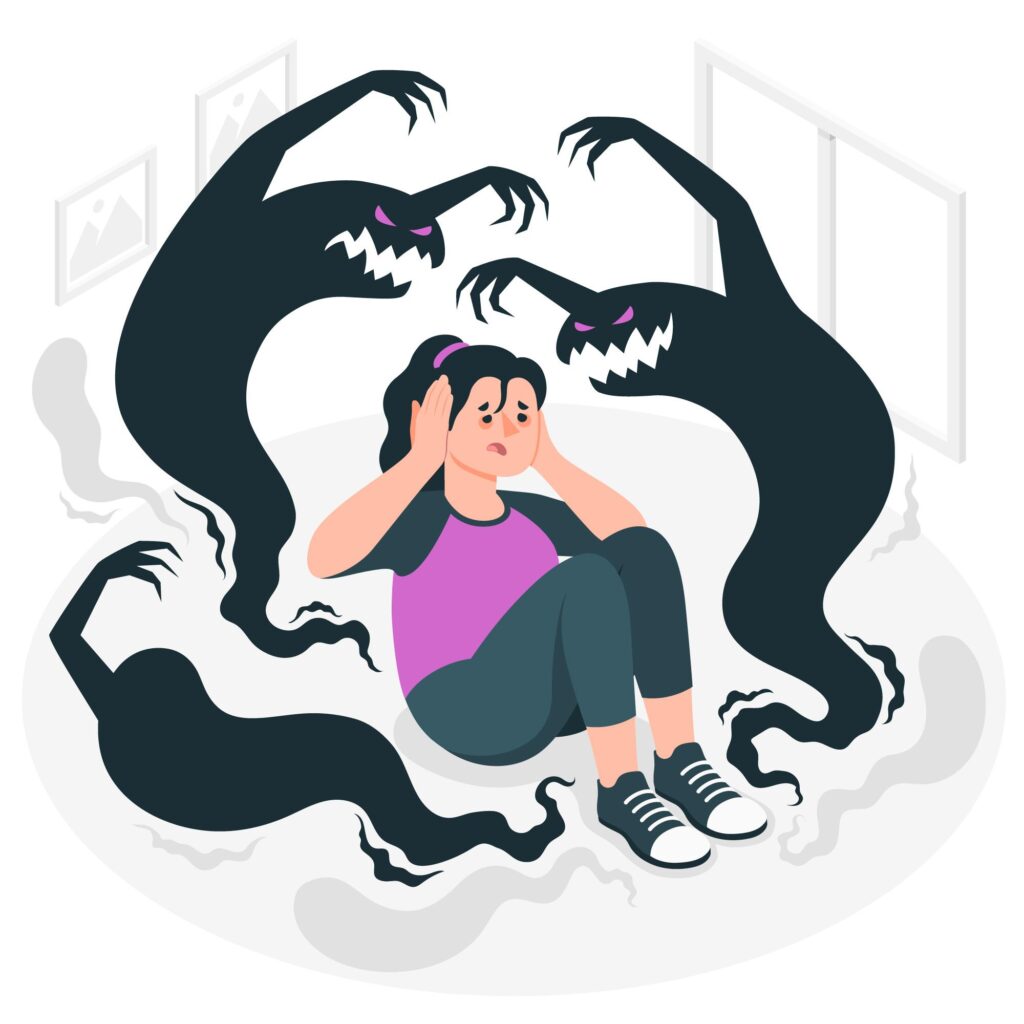
1. Comprehensive Assessment, Diagnosis, and Recommendations
Client Name: Sarah
Age: 28
Diagnosis: Schizophrenia (ICD-11 Code 6A20)
Assessment: Sarah, a 28-year-old graphic designer, presents with increasing social withdrawal and episodes of paranoia, where she believes her coworkers are plotting against her. Clinical interviews reveal persistent auditory hallucinations and difficulty concentrating. Her family provides additional context, noting her neglect of self-care and avoidance of social interactions. Using tools like the PANSS and BACS, the severity of her symptoms, cognitive impairments, and overall psychosocial performance were evaluated. Additionally, her family dynamics and work environment are reviewed to identify stressors contributing to her condition.
Recommendations: Sarah’s treatment plan should include starting a second-generation antipsychotic to help alleviate her hallucinations and paranoia. Weekly CBT sessions will target managing her paranoid thoughts while fostering confidence. Additionally, a social skills program and family psychoeducation workshops are essential for addressing interpersonal difficulties and building a strong support system.
2. Goal Setting and Prioritization
Sarah’s treatment plan is guided by collaboratively set goals that reflect her values and priorities. These goals are designed to be Specific, Measurable, Achievable, Relevant, and Time-bound (SMART):
- Short-term goals:
- Establish a daily medication routine within one month to stabilize symptoms.
- Attend weekly therapy sessions consistently for the next three months.
- Long-term goals:
- Participate in social activities, such as a weekly art class or support group, within six months.
- Begin freelance graphic design projects to regain a sense of purpose and financial independence by the ninth month.
3. Implementing Psychosocial and Pharmacological Interventions
To address Sarah’s symptoms holistically, we will implement the following evidence-based interventions:
- First 3 Months: Initiate antipsychotic medication to stabilize paranoia and hallucinations. Weekly CBT sessions to address delusional thoughts and build anxiety management techniques.
- Months 3–6: Begin family psychoeducation to foster understanding and improve support dynamics. Start social skills training (SST) to enhance Sarah’s ability to engage in conversations and rebuild confidence in social situations.
- Ongoing: Monitor medication adherence and adjust as needed. Explore supported employment opportunities in freelance graphic design to rebuild independence.
4. Monitoring Progress and Adjusting the Plan
Regular evaluations will ensure that Sarah’s treatment remains effective and aligned with her evolving needs. Progress will be reviewed through the following steps:
- Monthly Evaluations: Use PANSS to track changes in symptoms and determine intervention effectiveness. Assess her participation in social skills training and therapy sessions.
- Quarterly Reviews: Revisit functional goals, such as increasing social interactions and initiating freelance work. Incorporate your feedback about Sarah’s behavior and progress at home.
- Flexible Adjustments: Address any emerging challenges, such as medication side effects or persistent anxiety, by modifying the plan. Introduce new goals or interventions based on Sarah’s progress and readiness.
5. Relapse Prevention and Long-Term Maintenance
Schizophrenia requires proactive strategies to prevent relapse and ensure sustained recovery. Sarah’s relapse prevention plan includes:
- Education and Psychoeducation: Sarah and her family participate in psychoeducation sessions designed to help them recognize and respond to early warning signs of relapse.
- Stress Management: Incorporate mindfulness and relaxation exercises into Sarah’s weekly routine.
- Medication Adherence: Regular check-ins to ensure Sarah remains consistent with her medication.
Monitoring Schedule
- Crisis Planning: Sarah and her family will monitor for early signs of relapse, such as increased paranoia, social withdrawal, or disrupted sleep patterns. The family will contact her therapist or psychiatrist immediately if these symptoms persist for more than two days. The contact information for her mental health professionals is listed prominently in the plan. If symptoms escalate, her psychiatrist will review her medication regimen to determine if adjustments are needed. In the event of a severe relapse, Sarah’s family will escort her to the nearest emergency mental health center, using a crisis hotline as a resource for immediate guidance.
- Long-Term Maintenance: Sarah will continue attending biweekly social skills training sessions to strengthen her interpersonal skills and build confidence in group settings. She will work with a vocational counselor to pursue freelance graphic design projects, gradually increasing her workload to foster independence and financial stability. To promote physical and mental well-being, Sarah will follow a routine that includes 30 minutes of daily exercise, balanced meals, and a consistent sleep schedule.
Navigating Resource Constraints in Treatment Planning
When creating a treatment plan for schizophrenia, you may encounter resource limitations that restrict access to therapy, community programs, or housing support. These challenges require creative problem-solving and collaboration. Explore alternative resources like telehealth, peer support networks, and nonprofit services to fill gaps in care. Advocate for expanded access to programs such as assertive community treatment (ACT) teams and supported employment initiatives. Collaborating with social workers, case managers, and community organizations can also help provide holistic support. By leveraging available resources and interdisciplinary teamwork, therapists can ensure treatment plans remain actionable despite systemic barriers.
Conclusion: Guiding Recovery with Compassion and Expertise
Developing an effective treatment plan for schizophrenia requires a balance of evidence-based strategies, creativity, and empathy. By following the steps outlined in this guide—comprehensive assessments, goal setting, tailored interventions, continuous monitoring, and proactive relapse prevention—therapists can create actionable and individualized roadmaps to recovery.
These plans do more than address symptoms; they empower clients like Sarah to rebuild confidence, achieve personal goals, and lead fulfilling lives. With a commitment to collaboration and adaptability, therapists can transform challenges into opportunities, bridging gaps in care and ensuring that every client receives the support they need to thrive.
Referencias
[1] Kay SR, Fiszbein A, Opler LA (1987). "The positive and negative syndrome scale (PANSS) for schizophrenia". Schizophr Bull. 13 (2): 261–76. doi:10.1093/schbul/13.2.261
[2] Keefe, R. S., Goldberg, T. E., Harvey, P. D., Gold, J. M., Poe, M. P., & Coughenour, L. (2004). The Brief Assessment of Cognition in Schizophrenia: reliability, sensitivity, and comparison with a standard neurocognitive battery. Schizophrenia research, 68(2-3), 283–297. https://doi.org/10.1016/j.schres.2003.09.011
[3] Addington, D., Abidi, S., Garcia-Ortega, I., Honer, W., & Ismail, Z. (2017). Canadian Guidelines for the Assessment and Diagnosis of Patients with Schizophrenia Spectrum and Other Psychotic Disorders. The Canadian Journal of Psychiatry, 62, 594 – 603. https://doi.org/10.1177/0706743717719899
[4] Keepers, G. A., Fochtmann, L. J., Anzia, J. M., Benjamin, S., Lyness, J. M., … Mojtabai, R. (2020). The American Psychiatric Association Practice Guideline for the Treatment of Patients With Schizophrenia. American Journal of Psychiatry, 177(9), 868–872. https://doi.org/10.1176/appi.ajp.2020.177901
[5] Falloon, I., Held, T., Roncone, R., Coverdale, J., & Laidlaw, T. (1998). Optimal Treatment Strategies to Enhance Recovery from Schizophrenia. Australian and New Zealand Journal of Psychiatry, 32, 43 – 49. https://doi.org/10.3109/00048679809062704
[6] Stanhope, V., Ingoglia, C., Schmelter, B., & Marcus, S. (2013). Impact of person-centered planning and collaborative documentation on treatment adherence.. Psychiatric services, 64 1, 76-9 . https://doi.org/10.1176/appi.ps.201100489
[7] Casey, D. (2003). Long-Term Treatment Goals: Enhancing Healthy Outcomes. CNS Spectrums, 8, 26 – 28. https://doi.org/10.1017/S1092852900008178
[8] Buchanan, R., Kreyenbuhl, J., Kelly, D., Noel, J., Boggs, D., Fischer, B., Himelhoch, S., Fang, B., Peterson, E., Aquino, P., & Keller, W. (2010). The 2009 schizophrenia PORT psychopharmacological treatment recommendations and summary statements.. Schizophrenia bulletin, 36 1, 71-93 . https://doi.org/10.1093/schbul/sbp116
[9] Mueser, K., Deavers, F., Penn, D., & Cassisi, J. (2013). Psychosocial treatments for schizophrenia.. Annual review of clinical psychology, 9, 465-97 . https://doi.org/10.1146/annurev-clinpsy-050212-185620
[10] Bellack, A. (2001). Psychosocial treatment in schizophrenia. Dialogues in Clinical Neuroscience, 3, 136 – 137. https://doi.org/10.31887/DCNS.2001.3.2/asbellack
